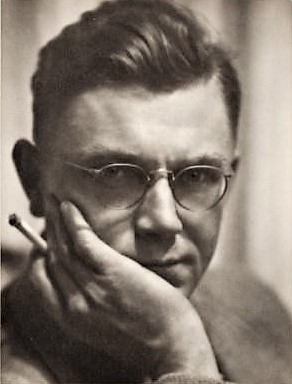
Anne (Annie) Douglas Savage was a Canadian painter and art teacher known for her lyrical, rhythmic landscapes. She was a founding member of the Canadian Group of Painters.

Antony Scherman was a Canadian painter. He was known for his use of encaustic and portraiture to depict events of historical, cultural and popular significance.

Sherbrooke Street is a major east–west artery and at 31.3 kilometres (19.4 mi) in length, is the second longest street on the Island of Montreal, Canada. The street begins in the town of Montreal West and ends on the extreme tip of the island in Pointe-aux-Trembles, intersecting Gouin Boulevard and joining up with Notre-Dame Street. East of Cavendish Boulevard this road is part of Quebec Route 138.
Martha Wilson is an American feminist performance artist and the founding director of Franklin Furnace Archive art organization. Over the past four decades she has developed and "created innovative photographic and video works that explore her female subjectivity through role-playing, costume transformation, and 'invasions' of other peoples personas". She is a recipient of two National Endowment for the Arts fellowships, a New York Foundation for the Arts fellowship, and an Obie Award and a Bessie Award for commitment to artists’ freedom of expression. She is represented by P.P.O.W. Gallery in New York City.

Melvin Charney C.Q. was a Canadian artist and architect.

Françoise Sullivan LL.D is a Canadian painter, sculptor, dancer, choreographer and photographer whose work is marked by her ability to switch from one discipline to another.

Trevor Goring is a visual artist, author, publisher, lecturer and consultant.
Peter Krausz is a Romanian-born Canadian artist. Throughout his career, he worked within the fields of painting, drawing, installation, and photography and, since 1970, exhibited in museums and galleries across Canada, the United States, and Europe. He is best known for large-scale landscape paintings of the Mediterranean.
Skawennati is a First Nations (Kahnawakeronon) multimedia artist, best known for her online works as well as Machinima that explore contemporary Indigenous cultures, and what Indigenous life might look like in futures inspired by science fiction. She served as the 2019 Indigenous Knowledge Holder at McGill University. In 2011, she was awarded an Eiteljorg Contemporary Art Fellowship which recognized her as one of "the best and most relevant native artists."

Philip Surrey LL. D. was a Canadian artist known for his figurative scenes of Montreal. A founding member of the Contemporary Arts Society, and Montreal Men's Press Club, Surrey was part of Montreal's cultural elite during the late 1930s and 1940s. In recognition of his artistic accomplishment he was elected to the Royal Canadian Academy of Arts, awarded a Canadian Centennial Medal in 1967 and was appointed to the Order of Canada in 1982.
Nelson Henricks is a Canadian artist known for his video works. Originally from Bow Island, Alberta, he received a diploma in visual arts from the Alberta College of Art. In 1991 he relocated to Montréal and obtained a Bachelor of Fine arts in Cinema from Concordia University. Henricks also works as a writer and curator. His texts have been published in many periodicals and publications relating to contemporary art, including the magazines Fuse, Esse, Parachute and Public.
Andréanne Abbondanza-Bergeron is a Canadian contemporary artist working in installation, sculpture and photography.

Yehouda Leon Chaki was a Greek-born Canadian artist based in Montreal, Quebec. Best known for his colourful palette and expressionistic landscapes, he began exhibiting in 1959 and today his work can be found in many public and corporate collections and museums around the world including the Musée d'art contemporain de Montréal, Beaverbrook Art Gallery, Eretz Israel Museum and Philadelphia Museum.
Mireille Perron is a Canadian visual artist, writer, scholar, and assistant professor at Alberta University of the Arts (AUArts) based in Calgary, Alberta. Born in Montreal, Quebec, Perron has been exhibiting widely across Canada, the United States, and Europe since 1982, and has published over 80 essays relating to visual art and craft and has been faculty at ACAD since 1990.
Judith Schwarz is a Canadian visual artist. Her work has been featured in exhibitions since 1979.
Karen Tam is a Canadian artist and curator who focuses on the constructions and imaginations of cultures and communities through installations in which she recreates Chinese restaurants, karaoke lounges, opium dens, curio shops and other sites of cultural encounters. She is based in Montreal, Quebec.
Martin Beck is a visual artist based in New York and Vienna. His artworks often derive from in-depth research into narratives from the fields of architecture, design and popular culture and are characterized by his usage of diverse media, including installation, photography, video, writing, sculpture, and drawing. Beck also works collaboratively and has, since the late 1990s, co-authored various exhibitions, publications, and exhibit design projects with artist Julie Ault.

David Spriggs is a Canadian-British installation artist known for his large-scale 3D ephemeral installations that layer transparent images, a technique he first began to use in 1999, to create the illusion of a three-dimensional landscape.
Raymond Gervais was an avant-garde conceptual artist in Montreal, who was also a sound artist; a performance artist; and an author. His installations explored notions of time, language, sound and silence, often taking music as a starting point. He was as interested in the apparatus of music as much as music itself. In 2014, he won the Governor General’s Award in Visual and Media Arts.

Antonietta Grassi is a contemporary Canadian artist based in Montreal, Quebec. She is known for her geometric abstract paintings which reference textiles, architecture, analog technologies and the history of 20th century painting. Her work has been featured in solo and group exhibitions in museums and galleries in Canada, the United States, and in Europe









